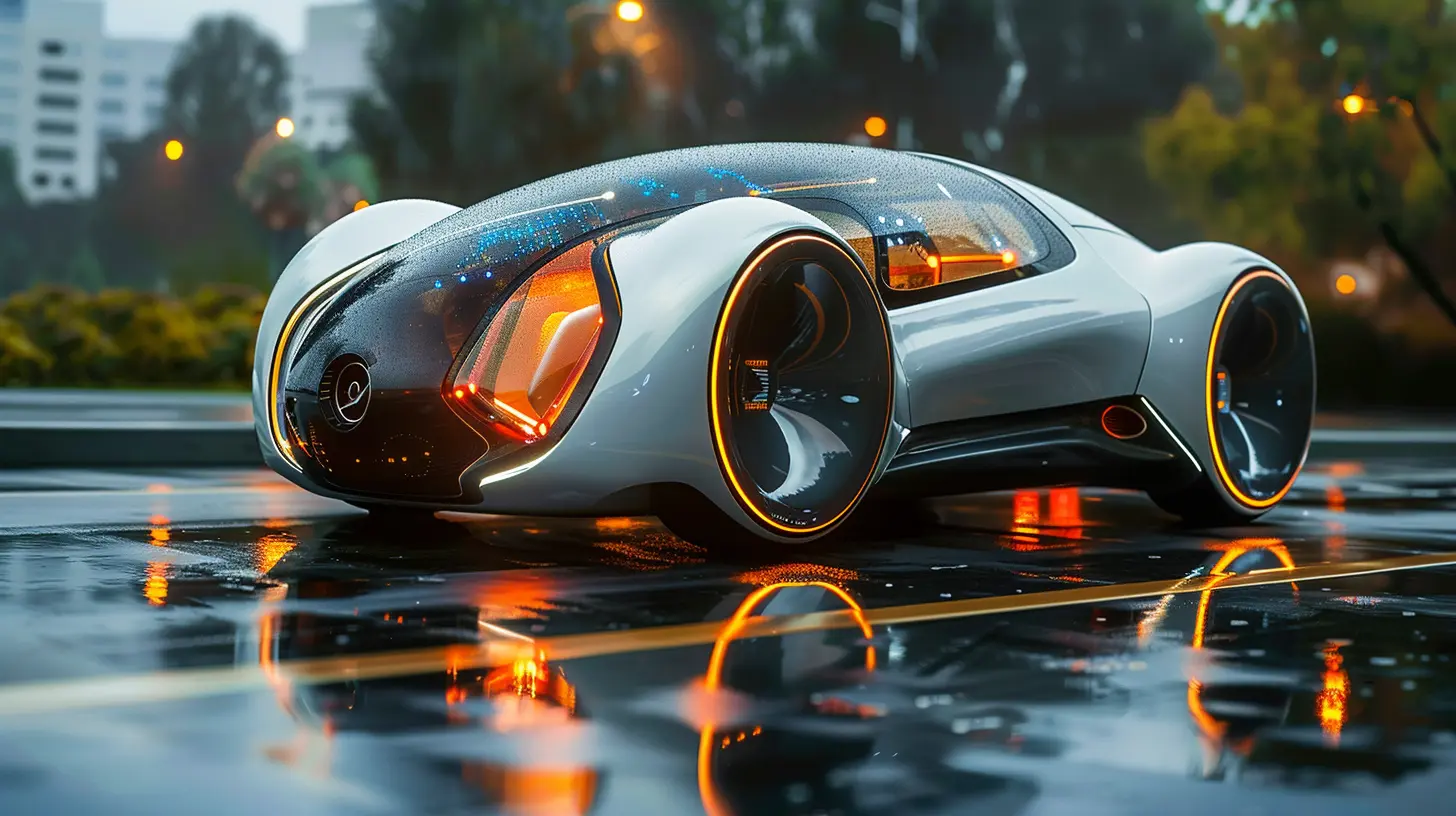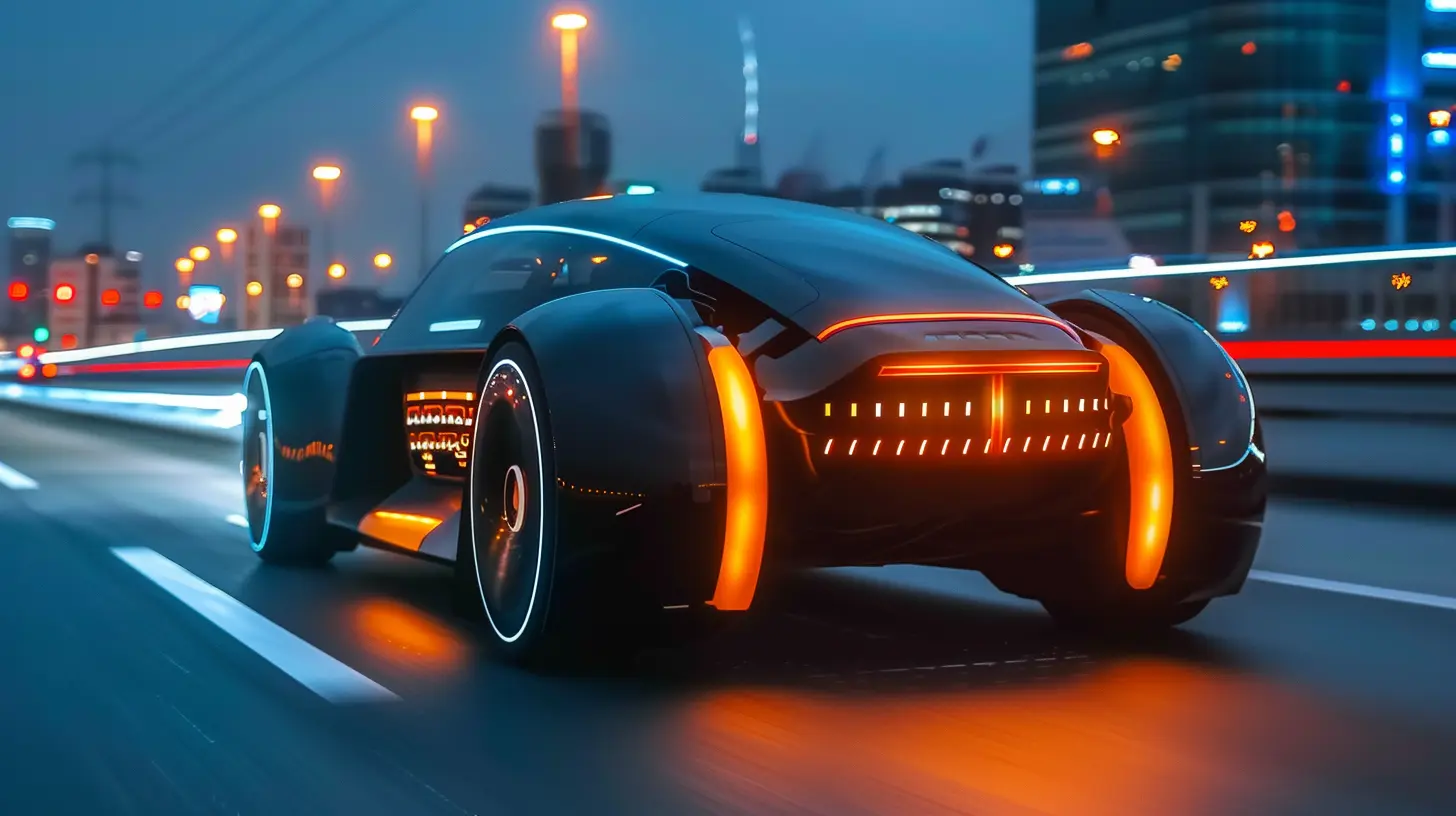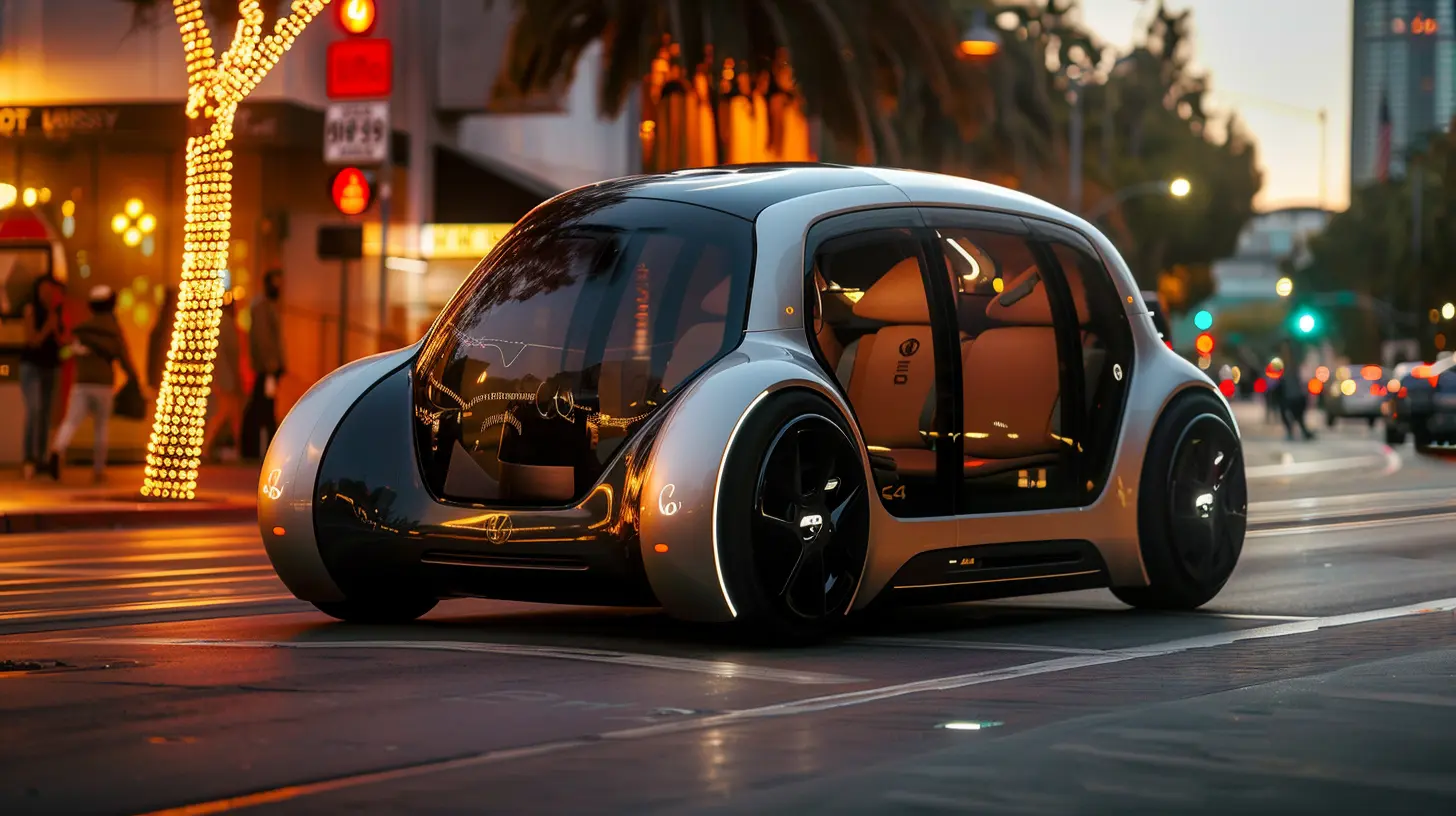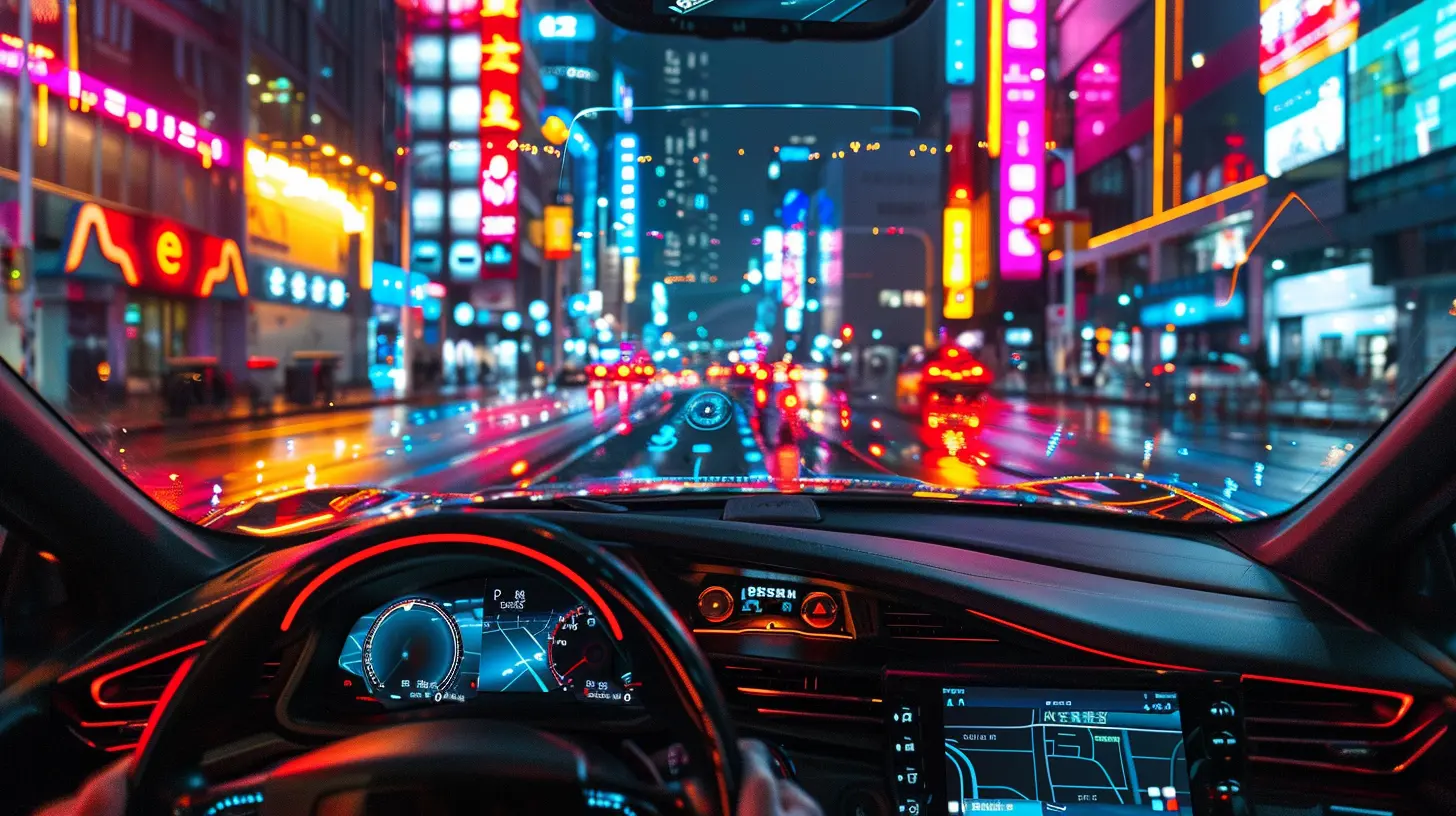Are Autonomous Cars the Key to Reducing Traffic Fatalities?
4 June 2025
Imagine a world where cars drive themselves. No more rushing through yellow lights, no more distracted driving, and certainly no more road rage. It sounds like science fiction, right? But with autonomous cars, this futuristic vision is becoming a reality faster than we think. And here's the kicker: these self-driving vehicles might just be the key to significantly reducing traffic fatalities.
Now, I know what you're thinking. "Really? How could a robot behind the wheel be safer than a human?" Well, let's dive into the nitty-gritty and explore whether autonomous cars hold the answer to making our roads safer.

The Current State of Traffic Fatalities
Before we jump into the world of autonomous cars, let’s take a moment to understand the current state of traffic fatalities. The numbers are staggering. According to the World Health Organization (WHO), approximately 1.35 million people die each year due to road traffic accidents. That’s equivalent to losing the entire population of a large city annually. It's terrifying, right?In the U.S. alone, the National Highway Traffic Safety Administration (NHTSA) reported that in 2021, there were around 42,915 traffic-related deaths. And the kicker? The majority of these accidents were caused by human error. We’re talking about drunk driving, speeding, distractions (hello, texting!), and plain old bad judgment.
So, what if we could eliminate the “human” factor? What if our cars were smarter, more alert, and didn’t get tired or distracted? That’s where autonomous vehicles come into play.

What Are Autonomous Cars?
Alright, first things first. What exactly are autonomous cars? Simply put, they are vehicles that can navigate and drive themselves without human intervention. These cars rely on a combination of sensors, cameras, radar, and artificial intelligence (AI) to understand their surroundings and make real-time decisions. Think of it as a super-intelligent chauffeur who’s always alert, never distracted, and doesn’t need to stop for coffee breaks.Autonomous vehicles are classified into five levels of autonomy, ranging from Level 0 (no automation) to Level 5 (full automation). At Level 5, the car is in complete control, and you don’t even need a steering wheel. You could theoretically take a nap, binge-watch your favorite show, or even catch up on emails while the car does all the work.
But we're not quite at Level 5 yet. Most of the autonomous cars currently being tested and used are at Level 2 or 3, meaning they still require some human oversight. Still, the technology is progressing quickly, and we’re inching closer to fully autonomous vehicles.

How Could Autonomous Cars Reduce Traffic Fatalities?
Now here’s the big question: how could these futuristic machines actually help reduce the number of traffic fatalities? Let’s break it down.1. Eliminating Human Error
Did you know that human error accounts for around 94% of all traffic accidents? That’s a jaw-dropping statistic. Whether it’s speeding, drunk driving, or just not paying attention, we humans often make mistakes behind the wheel. Autonomous cars, on the other hand, don’t suffer from these flaws.These vehicles rely on advanced algorithms and sensors to make precise, split-second decisions. They don’t get distracted by their phones, they don’t drive under the influence, and they don’t suffer from road rage. In fact, they don’t have emotions at all, which can be a huge advantage when it comes to driving safely.
2. Constant Vigilance
Let’s be honest. As much as we like to think we’re great drivers, we all have our moments of fatigue or distraction. Maybe it's after a long day at work, or maybe you're fiddling with the radio. Autonomous cars, however, don’t get tired. They are always "on," continuously scanning their environment with 360-degree awareness. Whether it's detecting a pedestrian about to cross the street or adjusting speed based on upcoming traffic, these cars are always alert.Think of it like having a co-pilot who never sleeps and has eyes everywhere. How many times have you wished for that, especially in heavy traffic?
3. Faster Reaction Times
Humans have a reaction time that averages around 1.5 seconds. That may not sound like much, but it can mean the difference between stopping in time and a devastating collision. Autonomous cars, however, can react in milliseconds. Their sensors instantly detect potential hazards, and they don't hesitate like humans might. Whether it's an unexpected jaywalker or a car abruptly braking in front, autonomous vehicles can respond faster than any human driver.4. Reduced Speeding and Reckless Driving
Let’s face it: we’ve all been guilty of pushing the speed limit at some point. But speeding is a major cause of accidents and fatalities. Autonomous cars are programmed to follow traffic laws meticulously. They won’t speed, tailgate, or make risky maneuvers. These cars stick to the rules, which could vastly reduce the number of accidents caused by reckless driving.5. Improved Traffic Flow
Ever been stuck in a bottleneck that seems to have no cause? A lot of traffic jams are the result of inefficient driving. Humans tend to brake suddenly, accelerate unpredictably, or delay in reacting to traffic signals. Autonomous vehicles, on the other hand, could communicate with each other to maintain smooth traffic flow. They can adjust their speed and position based on real-time data, reducing the chances of accidents and easing congestion.6. Enhanced Safety Features
Autonomous cars are packed with advanced safety features that could further reduce fatalities. These include automatic emergency braking, lane-keeping assistance, adaptive cruise control, and collision avoidance systems. These technologies can prevent a wide range of accidents, from rear-end collisions to lane-change mishaps.Even if a crash does occur, autonomous vehicles are designed to minimize the impact. For example, they can steer away from a dangerous situation or reduce speed before a collision to lessen the severity of the crash.

The Challenges of Autonomous Cars
Okay, so autonomous cars sound like a no-brainer for reducing traffic fatalities, right? But it’s not all smooth sailing. There are still some significant challenges that need to be addressed before we can fully rely on self-driving cars to make our roads safer.1. Technological Limitations
While the technology behind autonomous cars is impressive, it’s not perfect. Sensors can sometimes misinterpret certain situations, especially in complex environments like busy city streets. For example, an autonomous car might struggle to understand the intentions of a pedestrian or cyclist, leading to potential accidents.Moreover, weather conditions like heavy rain, snow, or fog can throw off the car's sensors, making it difficult for the vehicle to “see” its surroundings. Until these technological hurdles are overcome, autonomous cars might not be as reliable as we’d like them to be.
2. Ethical Dilemmas
Here’s a tricky one: what happens when an autonomous car has to make a moral decision? For example, if an accident is unavoidable, should the car prioritize the safety of its passengers or pedestrians? These ethical dilemmas are tough to program into a machine, and there’s ongoing debate about how to handle such scenarios.3. Public Trust and Acceptance
Let’s be real. Not everyone is ready to hand over the keys to a robot. Many people are still skeptical about the idea of autonomous cars, especially when it comes to their safety. After all, we’ve heard stories of self-driving cars getting into accidents, and that can be enough to make people wary.Building public trust will be crucial for the widespread adoption of autonomous vehicles. People need to feel confident that these cars are not only safe but also more reliable than human drivers.
4. Legal and Regulatory Hurdles
The road to autonomous cars isn’t just about perfecting the technology. There are also legal and regulatory challenges that need to be addressed. Who’s responsible if an autonomous car gets into an accident? How do we regulate these vehicles to ensure they’re safe for public use? These are just a few of the questions that lawmakers and regulators need to tackle before autonomous cars can become mainstream.The Future of Autonomous Cars and Road Safety
Despite the challenges, the potential for autonomous cars to reduce traffic fatalities is undeniable. As the technology continues to evolve and improve, we could see a future where traffic accidents are a rare occurrence. Imagine a world where driving is no longer the leading cause of death for young people, where our roads are safer, and where getting behind the wheel isn’t a life-or-death gamble.But we’re not there yet. While autonomous cars hold great promise, they’re not a silver bullet. It will take time, effort, and collaboration between tech companies, governments, and the public to make this vision a reality.
In the meantime, it’s clear that autonomous cars are more than just a cool gadget. They have the potential to revolutionize road safety and save countless lives. The real question is: are we ready to embrace this technology and let the machines take the wheel?
Conclusion
Are autonomous cars the key to reducing traffic fatalities? The answer is a resounding "maybe." While the potential is there, we're still in the early stages of this technological revolution. Autonomous vehicles, with their ability to eliminate human errors, react faster, and follow traffic laws, could drastically reduce the number of accidents on our roads. However, there are still significant challenges to overcome, from technical limitations to ethical concerns.Ultimately, autonomous cars represent a promising future for road safety. But it’s going to take time, trust, and a lot of fine-tuning before we can fully rely on these self-driving wonders to make our roads as safe as they can be. The future is bright, but we’re not quite there yet.
all images in this post were generated using AI tools
Category:
Autonomous VehiclesAuthor:

John Peterson
Discussion
rate this article
3 comments
Thor Jordan
While autonomous cars promise a future with fewer traffic fatalities, the real challenge lies in public acceptance and infrastructure adaptation. Can we trust algorithms over instinct? Until we bridge the gap between technology and human behavior, the road ahead remains uncertain. Safety innovation is crucial, but so is societal readiness.
June 20, 2025 at 12:19 PM

John Peterson
You make an excellent point. Public trust and infrastructure readiness are indeed vital for the successful integration of autonomous vehicles. Bridging the gap between technology and human behavior will be essential for realizing their safety potential.
Thea Luna
While autonomous cars promise to enhance road safety by minimizing human error, it’s essential to consider factors like technical reliability, ethical decision-making, and public acceptance. A holistic approach, integrating technology with robust regulations and infrastructure improvements, will be crucial for meaningful change.
June 12, 2025 at 4:31 AM

John Peterson
You make an excellent point! A holistic approach that addresses technical reliability, ethical considerations, and public acceptance is vital for realizing the full safety benefits of autonomous cars. Thank you for highlighting these important factors!
Molly Beck
While autonomous cars hold promise for reducing traffic fatalities through improved safety features, a holistic approach involving infrastructure, legislation, and public awareness is essential for truly transforming our roadways.
June 4, 2025 at 3:51 AM

John Peterson
I completely agree! A multifaceted approach is crucial to fully realize the potential of autonomous vehicles in enhancing road safety.



